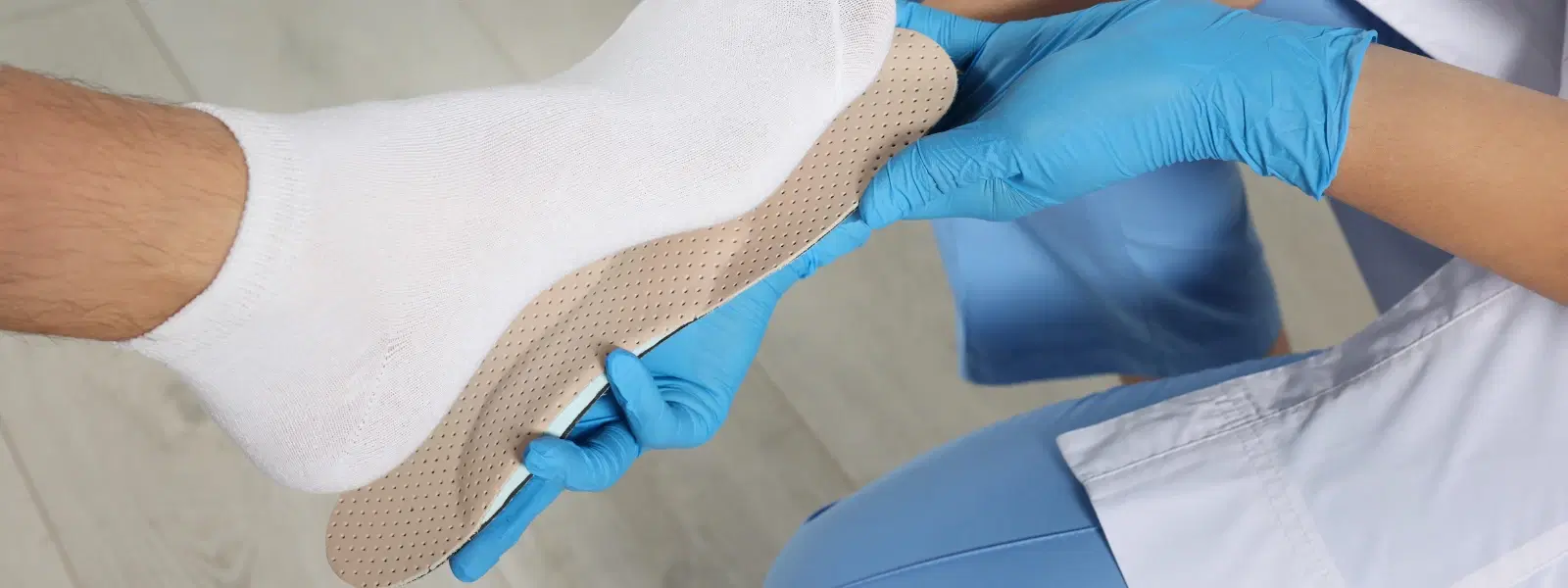
Footwear Guide
•04 min read

Finding the perfect shoe is all about expressing your unique style and ensuring comfort. In this guide, we will explore a comprehensive shoe sizing guide that simplifies the process of measuring your feet. Whether you are shopping for everyday footwear, sleek sneakers, or stylish shoes for children, this step-by-step process will help you make confident choices by providing accurate shoe measurement tips and advice.
Wearing shoes that fit well is essential for both comfort and foot health. When the shoes are too tight or too loose, they can lead to discomfort, blisters, or even longer-term issues such as misalignment or plantar fasciitis. A precise shoe sizing guide ensures that you prioritize your style without compromising on functionality. Many assume that shoe sizes remain constant, but in reality, factors like age, weight changes, and even lifestyle can affect your measurement. Taking the time to measure your feet accurately means you enjoy benefits such as improved comfort, better posture, and fewer returns when shopping online.
Moreover, as you navigate different footwear size charts and learn how to convert shoe sizes between international standards, these measurements help ensure the best practices for shoe sizing, especially when choosing between wide vs narrow shoe sizes. The accurate approach makes finding the perfect adult shoe size guide a breeze, and even ensures that children’s shoe sizing is done appropriately as their feet grow.
Measuring your feet at home is simple when you have the right tools and follow the process carefully. Start by gathering a ruler or measuring tape, a piece of paper that is larger than your foot, and a pen or pencil. Clear space on a hard surface is ideal to prevent inaccurate results. Standing firmly on the paper, evenly distribute your weight to capture your natural foot profile. Tracing your foot while keeping the pen upright ensures that the outline is accurate.
After tracing, use the ruler to measure the distance from the tip of your longest toe to the back of your heel. This is your foot length. Similarly, measure the width at the widest part of your foot. These measurements will be your reference when comparing to a reliable footwear size chart. Authenticity in measurement is key, so ensure each step is completed with care. With these best practices for shoe sizing, you can confidently know how to measure shoe size for yourself or your loved ones.
A crucial step in this shoe sizing guide is learning to use footwear size charts effectively. Most charts provide measurements in both inches and centimeters and often list US, UK, and EU equivalents. By matching your recorded foot length and width with these charts, you can easily convert shoe sizes. For instance, understanding how to convert shoe sizes internationally is important if you are buying shoes from a different region. Knowing that US, UK, and EU sizes differ is vital in ensuring you choose the right fit.

For children’s shoe sizing, special charts exist to accommodate rapid foot growth in toddlers, little kids, and big kids. Additionally, consider whether you need wide vs narrow shoe sizes. Shoes customised for wider feet provide enhanced comfort if your width measures above average, and the same goes for those with narrow measurements. This step-by-step alignment with accurate shoe measurement best practices makes your choices truly personal and supportive of your lifestyle’s dynamic needs.
There are many shoe fitting tips that can help you find the perfect match for your needs. For example, trying shoes on at the end of the day is a commonly recommended practice, since feet tend to swell slightly, enabling you to better assess comfort. Wearing socks that mirror what you plan to use with the new pair is another tip that adds to the accuracy. It is important to walk around in the shoes to ensure that they do not pinch or slip, particularly if you are choosing athletic shoes or those for extended wear.
Other factors such as the type of material—where leather may stretch over time while synthetics may not—also affect how a shoe fits. Consider the style; pointed-toe shoes often require a slightly larger size, and even different activities such as hiking may demand shoes with extra room. A good tip to keep in mind is allowing a break-in period for some shoes that adapt to your feet after a few wears, ensuring that the initial tightness does not mislead you about the fit.
Expert Tip: Measure Both Feet
Did you know that many people have one foot slightly larger than the other? Always measure both feet and use the larger measurement to determine your shoe size. This ensures a comfortable fit for both feet and avoids unnecessary discomfort.
Even experienced shoppers can sometimes fall into common pitfalls while trying to measure their feet. One frequent error is relying on outdated measurements. Since your foot size can shift due to various factors like age or lifestyle changes, it is a good practice to remeasure your feet regularly. Equally important is to pay attention to both the length and the width of your foot; neglecting the width can result in shoes that either pinch or feel unstable.
Another mistake is ignoring the specific charts provided by shoe manufacturers. Each brand can have its own size standard, so consulting a dedicated footwear size chart ensures the best possible fit. Whether you are looking at an adult shoe size guide or trying to convert shoe sizes from one system to another, being thorough can help you avoid discomfort and ensure you achieve a precise, stylish fit.

Place your foot on a piece of paper, trace the outline, and measure the length and width using a ruler or measuring tape.
No, shoe sizing varies by brand. Always check the specific size chart provided by the manufacturer.
You can use a conversion chart. For example, a US size 9 typically corresponds to an EU size 42.
Measure both the length and width of the foot and compare the results to a chart specifically for children's shoe sizing since kids' feet grow quickly.
Yes, if your width measurement exceeds the average, opting for wide-fit shoes will help ensure proper alignment and comfort.
In conclusion, mastering the art of accurate shoe measurement is key to achieving a perfect balance between style and comfort. By following the detailed steps outlined above, using reliable footwear size charts, and being mindful of potential mistakes, you are well equipped with the knowledge needed to confidently select shoes that feel as good as they look. Embrace the inviting exploration of style and wellness that comes with finding your perfect fit.